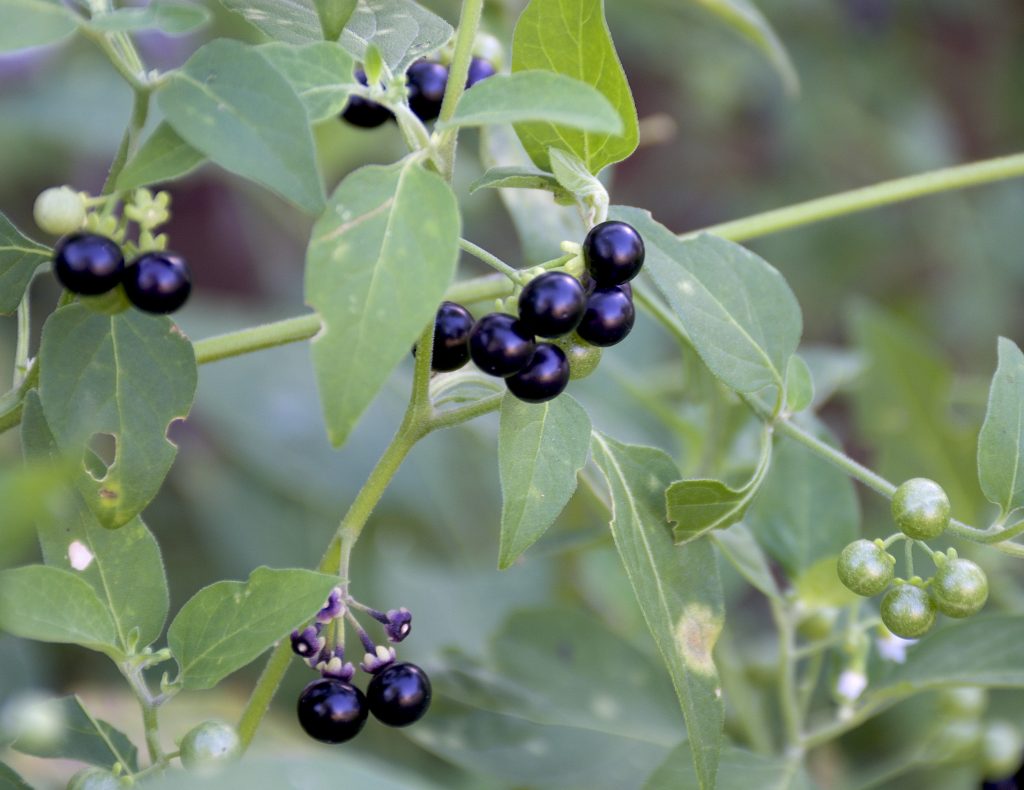
The American Nightshade is a much-maligned plant. Whether discussing its name or edibility there can be confusion. In our foraging class Sunday at Lake Woodruff National Preserve we saw thousands of ripe American Nighshade berries, Solanum americanum. Their flavor ranges from mild to slightly sweet, non-descript to pleasant, not bitter. It’s fairly easy to identify: The toxic unripe berries are green, shiny, mottled and flecked with white. They cluster at one point on the end of the peduncle (stem.) Then they turn deep purple, shiny and edible. Also you can find blossoms with petals that fold down and backwards rather than upward and around the middle. But you have to be careful.
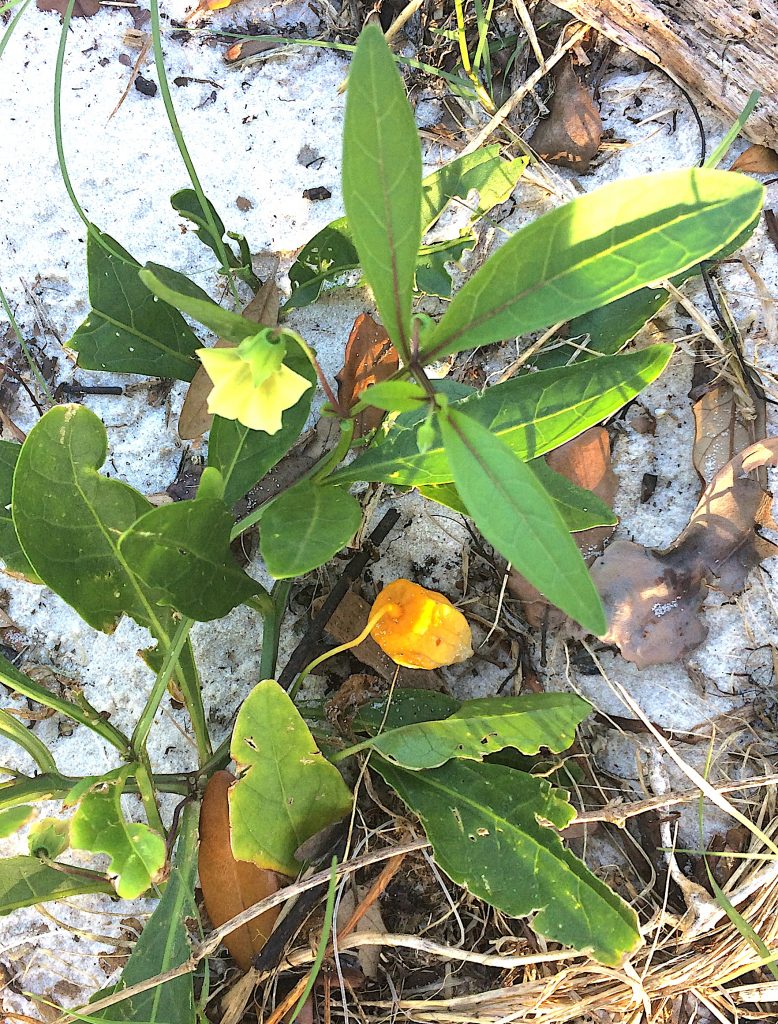
About a half hour before finding this bonanza of ripe American Nightshade berries we found another nightshade, similar looking. The unripe berries were clustered at the end of the peduncle but they were not shiny, mottled or flecked with white. They were a dull green. And the ripe berries were larger than usual and a dull black. Their taste was bitter. I think I run into the wayward species occasionally, from Deland to Ocala. The dull look to the berries and their larger than usual size are a good tip off and of course when ripe they taste bitter. One possibility is Solanum chenopodioides but I’m not certain of that. I just avoid it. You can read about the American Nightshade here.
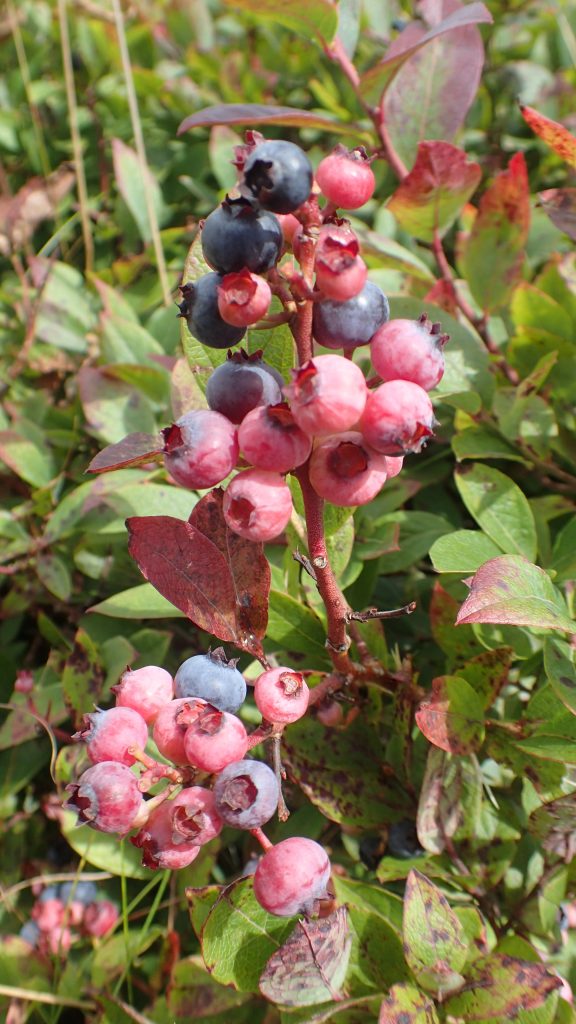
We also saw a variety of Vacciniums. There were short-bush blueberries (with black berries) and tall blue berries and also Huckleberries which can be black or blue, too. Two ways to separate the them is that blueberries can have any number of seeds in the fruit. Huckleberries always have ten seeds. Also Huckleberry leaves have small gold-colored glands that shine in the sunlight. Easy to identify is the Deerberry. It looks like a high-bush blueberry or huckleberry except the undersides of the leaves are whitish. Also when ripe the fruit can be green to deep ruby in color. You can read about them here.
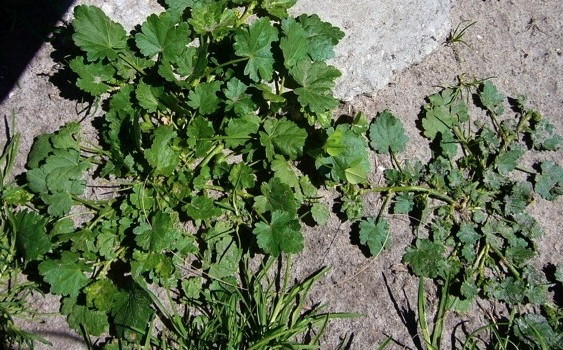
A lot of wild plants can resemble parsley and as a result they get overlooked. One such species is the Carolina Bristle Mallow. I see it occasionally and in very diverse places from under a look-out tower at a wilderness preserve on the St. Johns river to lawn grass at a suburban dentist office. It’s probably more common and prolific I just don’t see it. The species’ common name reflects that the blossoms resemble a Mallow. However, it actually is a monotypic genus plant which means the only species in its genus. There are actually many edibles like that and I started a page of them. However, Word Press won’t let me expand that page as it won’t let me expand my instructor page. Like plants, popular programs can have bugs. The Carolina Bristle Mallow barely makes it into the edible realm. It’s used to make a drink which is high in magnesium. You can read about it here.

This weekend’s foraging classes will be in Jacksonville and Gainesville, two good locations with interesting plants. Also note I will be teaching in South Carolina in July, at least the 13th and the 14, in Honea Path. My cousin has a farm there and we’ll be making a fair of it. There should be a morning and afternoon class each day. (And I apologize for the following shift in font size. Word Press absolutely won’t let me change it despite hours of trying.)
Saturday, May 18th, Florida State College, south campus, 11901 Beach Blvd., Jacksonville, 32246. 9 a.m. to noon. We will meet at building “D” next to the administration parking lot.
Sunday, May 19th, Boulware Springs Park, 3420 SE 15th St., Gainesville, FL 32641. 9 a.m. to noon. Meet at the picnic tables next to the pump house.
Saturday, May 25th, Blanchard Park, 10501 Jay Blanchard Trail, Orlando, FL 32817. 9 a.m. to noon. Meet next to the tennis courts by the YMCA building.
Sunday, May 26th, Eagle Park Lake, 1800 Keene Road, Largo, FL 33771. 9 a.m. to noon. Meet at the pavilion near the dog park.
Saturday, June 1st, Bayshore Live Oak Park, Bayshore Drive. Port Charlotte. 9 a.m. to noon. Meet at the parking lot at the intersection of Bayshore Road and Ganyard Street. 9 a.m. to noon.
Sunday, June 2nd, Wickham Park: 2500 Parkway Drive, Melbourne, FL 32935-2335. 9 a.m. to noon.Meet at the “dog park” inside the park.
Saturday June 8th, Wekiva State Park, 1800 Wekiwa Circle, Apopka, Florida 32712. 9 a.m. to noon. Arrive early as there will be a lot of people wanting to go to the springs to swim. There is a park admission Fee: $6 per vehicle. Limit 8 people per vehicle, $4 for a single occupant vehicle, $2 pedestrians or bicyclists. Meet at the Sand Lake parking lot (road on left after entrance. Go to end of road.) Unlike city parks or the urban area, Wekiva Park is “wild” Florida. There are very few weeds of urbanization. The edibles are mostly native plants and far between. There is a lot of walking in this class.
Sunday, June 9th, Red Bug Slough Beneva Road, Sarasota, FL, 34233. 9 a.m. to noon. Meet at the parking lot.
Saturday, June 15th, Eagle Park Lake, 1800 Keene Road, Largo, FL 33771. 9 a.m. to noon. Meet at the pavilion near the dog park.
Sunday, June 16th, Ft. Desoto Park, 3500 Pinellas Bayway S. St. Petersburg Fl 33715. Meet at the parking lot of the fishing pier, northeast end of the parking lot. 9 a.m. to noon. There is a fee to get into the park. The fishing pier is about halfway along the SW/NE road along the southern end of the park. There is only one fishing pier. This is also father’s day so perhaps you can go fishing or swimming after class. High tide is at noon that day at the park. Also that evening at 7:15 pm. there is a “shoot the full moon” event at the park. It is to watch the full moo16n rise between the Sunshine Skyway Spans.
Saturday, June 22nd, Blanchard Park, 10501 Jay Blanchard Trail, Orlando, FL 32817. 9 a.m. to noon. Meet next to the tennis courts by the YMCA building.
Sunday, June 23rd, Spruce Creek Park, 6250 Ridgewood Ave. Port Orange, 32127. GPS: N 20°05’35.4″ W080°58′.26.2″ 9 a.m. to noon. Meet at the pavilion.
Saturday June 29th: Ft. Meade Outdoor Recreation Area, 1639 Frostproof Highway, Fort Meade, FL 33841. (Frostproof Highway is also Route 98.) 9 a.m to noon. Meet at the brown bathrooms in the middle of the park which is due south from the highway. (Not the tan bathrooms near the intersection.)
Sunday June 30th, John Chestnut County Park: 2200 East Lake Road, Palm Harbor, FL 34685. 9 a.m. to noon. Meet at the trail head of the Peggy Park Nature Walk, pavilion 1 parking lot, inside the park.
Saturday, July 13th, Sunday July 14th, 1624 Taylor Road, Honea Path, South Carolina. Ever want a class with Green Deane but he never seems to come to your neck of the woods? Then mark mid-July on your calendar. Green Deane will have at least four foraging class in Honea Path. Times 9 a.m. and 1 p.m. both Saturday and Sunday, rain or shine (except hurricanes.) Cost is $30 per adult, supervised children free. All of Green Deane’s classes are hands on, walking outside over two to three hours. Wild edible plants, medicinals and perhaps a mushroom or two will be on the agenda. For more information you can contact Putney Farm on Facebook or Green Deane at GreenDeane@gmail.com.
Saturday, July 20th, Blanchard Park, 10501 Jay Blanchard Trail, Orlando, FL 32817. 9 a.m. to noon. Meet next to the tennis courts by the YMCA building.
Sunday, July 21st, Dreher Park, 1200 Southern Blvd., West Palm Beach, 33405. 9 a.m to noon. Meet just north of the science center in the north section of the park.
To learn more about the classes go here.
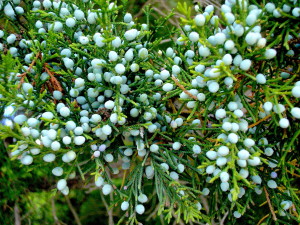
In West Palm Beach we saw some Cedars putting on berries… except they really are not “cedars” though we call them that and they don’t put on “berries” but rather berry-shaped cones. Thus we call them Cedars with berries but they are really tree-size Junipers with cones. It can be confusing if you want to use the berries/cones. The bottom line is most low-growing junipers in Florida are imports and most of them toxic. Thus it is just safer to get your berries/cones from the junipers that take tree form. Those are the Eastern Cedar and the Southern Cedar. The berry-shaped cones have many uses. They are used in authentic German cooking, they flavor gin, the cones make an anti-viral tea and are a mild diuretic. You can also get a yeast off them to make sourdough bread. You can read about them here.

Donations to upgrade EatTheWeeds.com have gone well. Thank you to all who have contributed to either via the Go Fund Me link, the PayPal donation link or by writing to Green Deane POB 941793 Maitland FL, 32794.

Want to identify a plant? Looking for a foraging reference? Do you have a UFO, an Unidentified Flowering Object you want identified? On the Green Deane Forum we chat about foraging all year. And it’s not just about warm-weather plants or just North American flora. Many nations around the world share common weeds so there’s a lot to talk about. There’s also more than weeds. The reference section has information for foraging around the world. There are also articles on food preservation, and forgotten skills from making bows to fermenting food. One special section is “From the Frightening Mail Bag” where we learn from people who eat first then ask questions later. You can join the forum by clicking on “forum” in the menu.
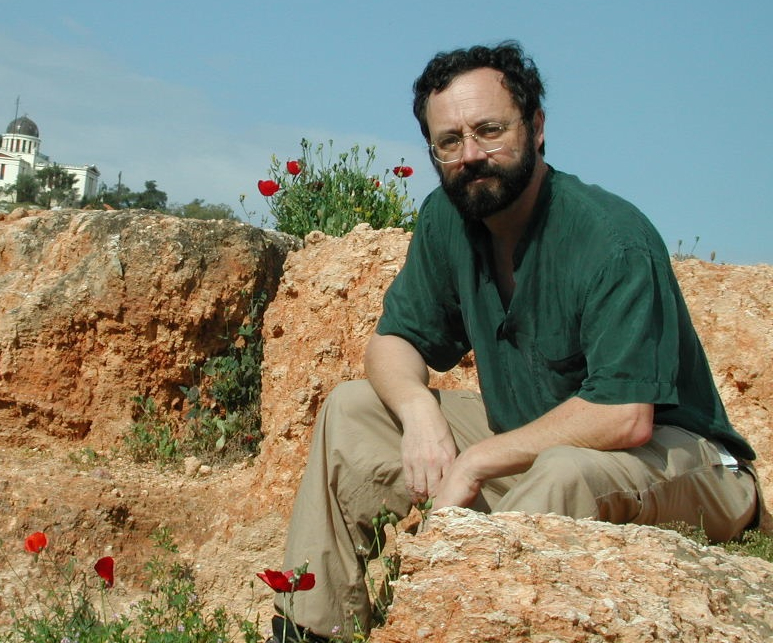
All My Videos are available for free on You Tube. They do have ads on them so every time you watch a Green Deane video I get a quarter of one cent. Four views, one cent. Not exactly a large money-maker but it helps pays for this newsletter. If you want to see the videos without ads and some in slightly better quality you can order the DVD set. It is nine DVDs with 15 videos on each for a total of 135 videos. Many people want their own copy of the videos or they have a slow service and its easier to order then to watch them on-line. The DVDs make a good gift for that forager you know especially as spring is … springing. Individual DVDs can also be ordered or you can pick and choose. You can order them by clicking on the button on the top right hand side of this page (if your window is open wide enough.) Or you can go here.
This is weekly issue 355.


Not a comment ; but complainig against Askimt : 3 times back my comments don’t appear though they were to the point . I wo’nt give up because Eat The Weeds is part of me . Still l enjoy very much reading it . Thanks for your expensive effort.